In ATCC®’s 2026 RBT® 40-hour training course—fully aligned with the BACB®’s 3rd Edition Task List—Task Analysis is introduced as a powerful tool that breaks complex skills into smaller, teachable steps. This approach makes learning manageable, consistent, and easier to master for clients at all levels.
What is Task Analysis?
What is Task Analysis?Task Analysis is the process of breaking down a complex skill into clear, simple steps. Whether you’re teaching a child to brush their teeth or pack a backpack, Task Analysis helps ensure each step is taught systematically, with the right level of prompting and reinforcement.
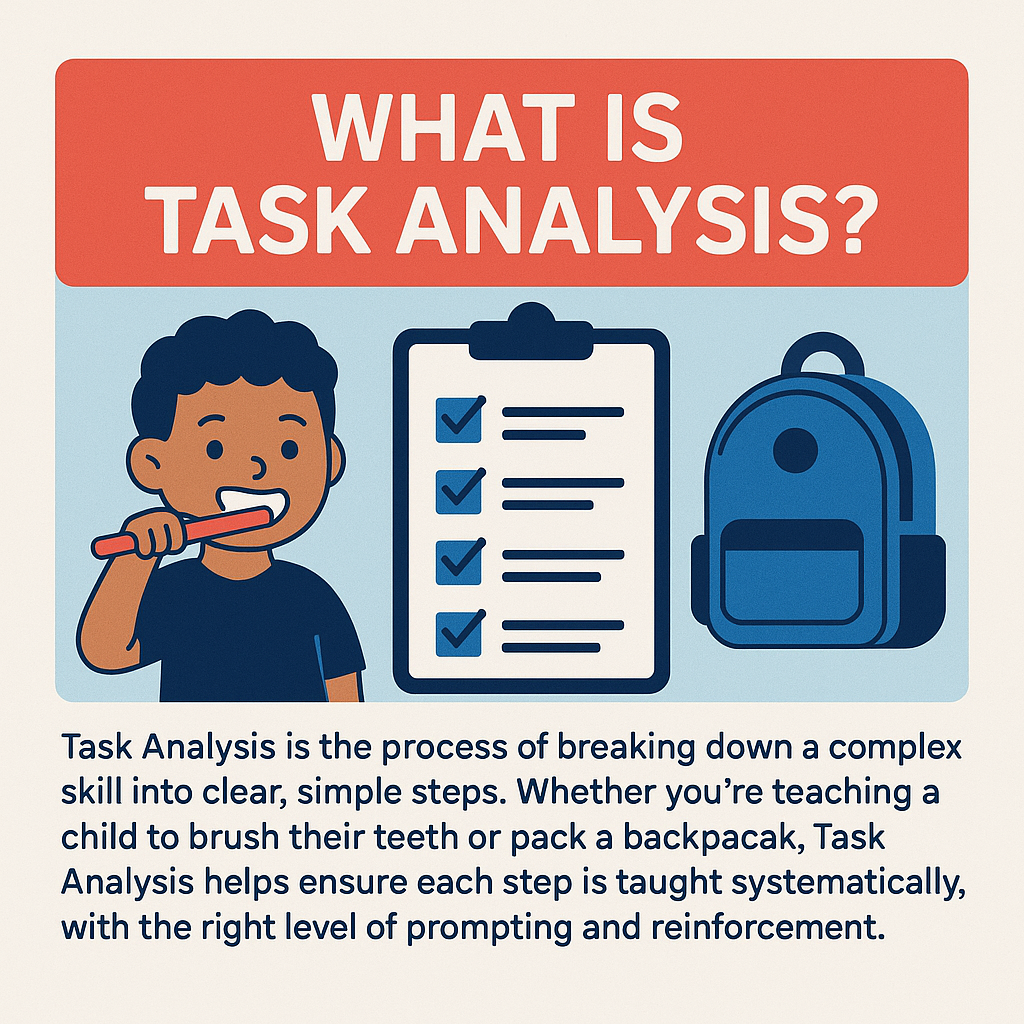
Why Use It?
- Makes learning less overwhelming
- Promotes consistency across staff and sessions
- Increases success and independence
- Supports data-driven instruction and reinforcement
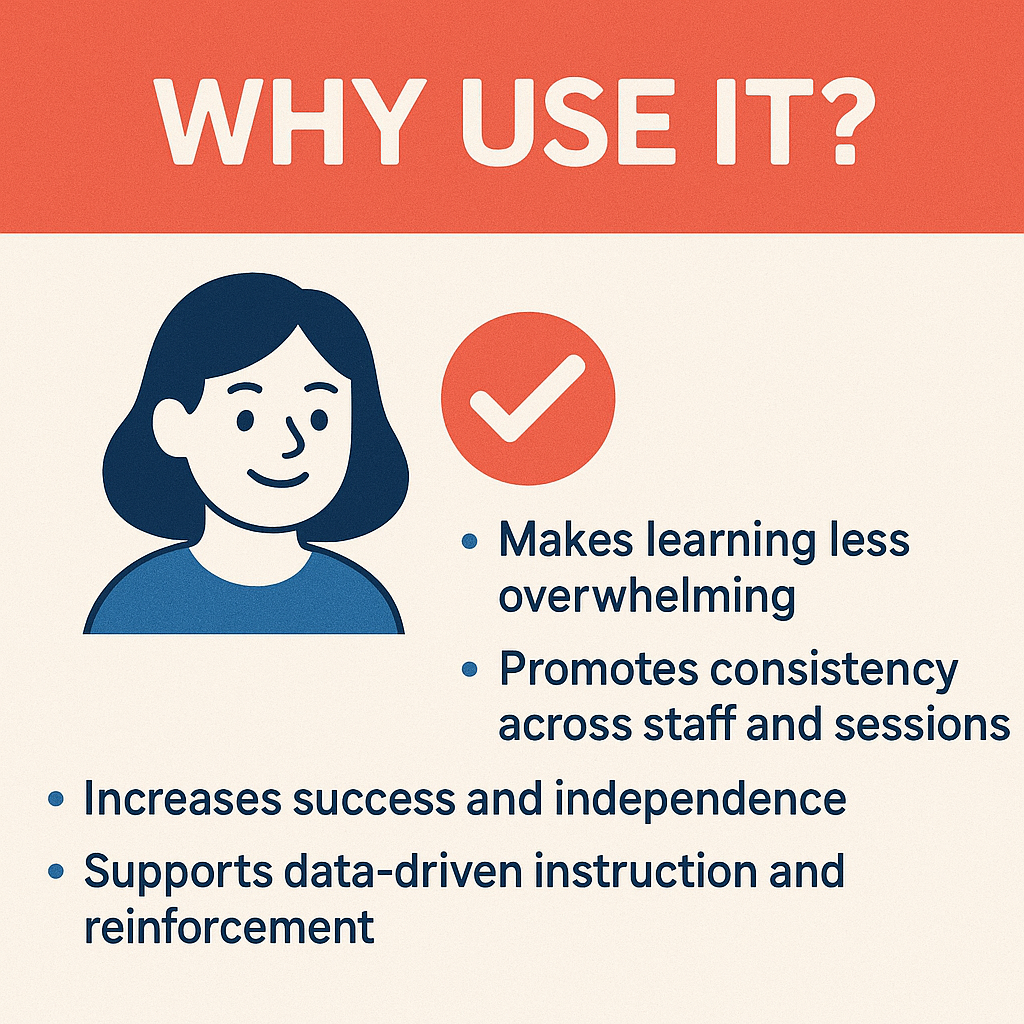
Real-Life Examples of Task Analysis
Forward Chaining:
In forward chaining, the client is taught the first step in the sequence first. The RBT® prompts all remaining steps. Once the first step is mastered, the client learns the second step, and so on.
Example – Tying Shoelaces:
- The client learns to cross one lace over the other (Step 1).
- The RBT® completes the rest of the steps for them (Steps 2–6).
- Once Step 1 is mastered, the client is taught to tuck one lace under and pull tight (Step 2), while the RBT® completes the rest.
This continues until the client can independently tie their shoes.Task Analysis is the process of breaking down a complex task into smaller, teachable steps. Once the task is analyzed, RBTs® can use one of three chaining procedures to teach the skill:
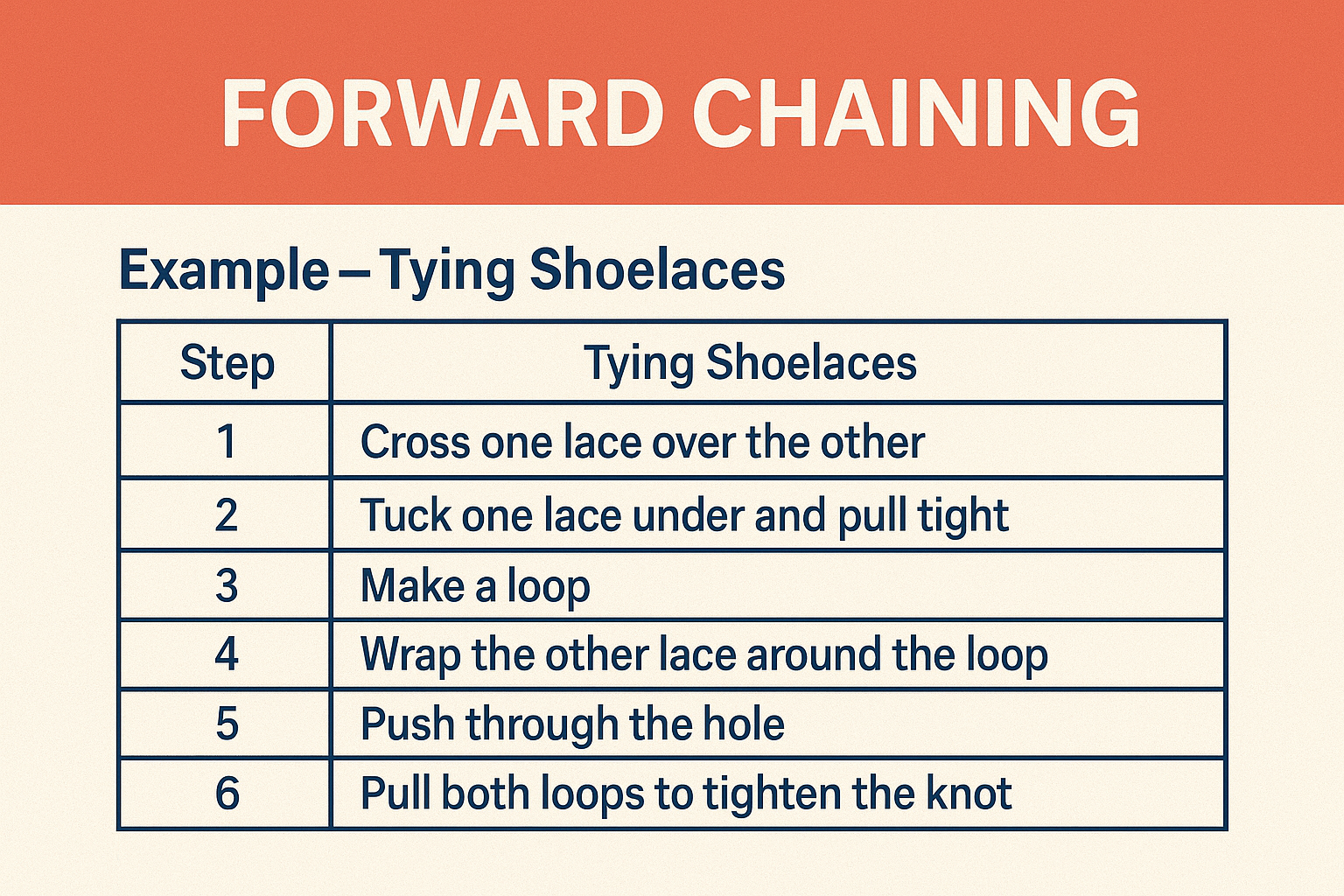
Backward Chaining
Example – Washing Hands:
- The RBT® prompts the client through Steps 1–6 (turning on water through turning off water).
- The client is taught to dry hands with a towel or dryer (Step 7).
- Once Step 7 is mastered, the client then learns to turn off the water, followed by drying hands—while the RBT® prompts the earlier steps.
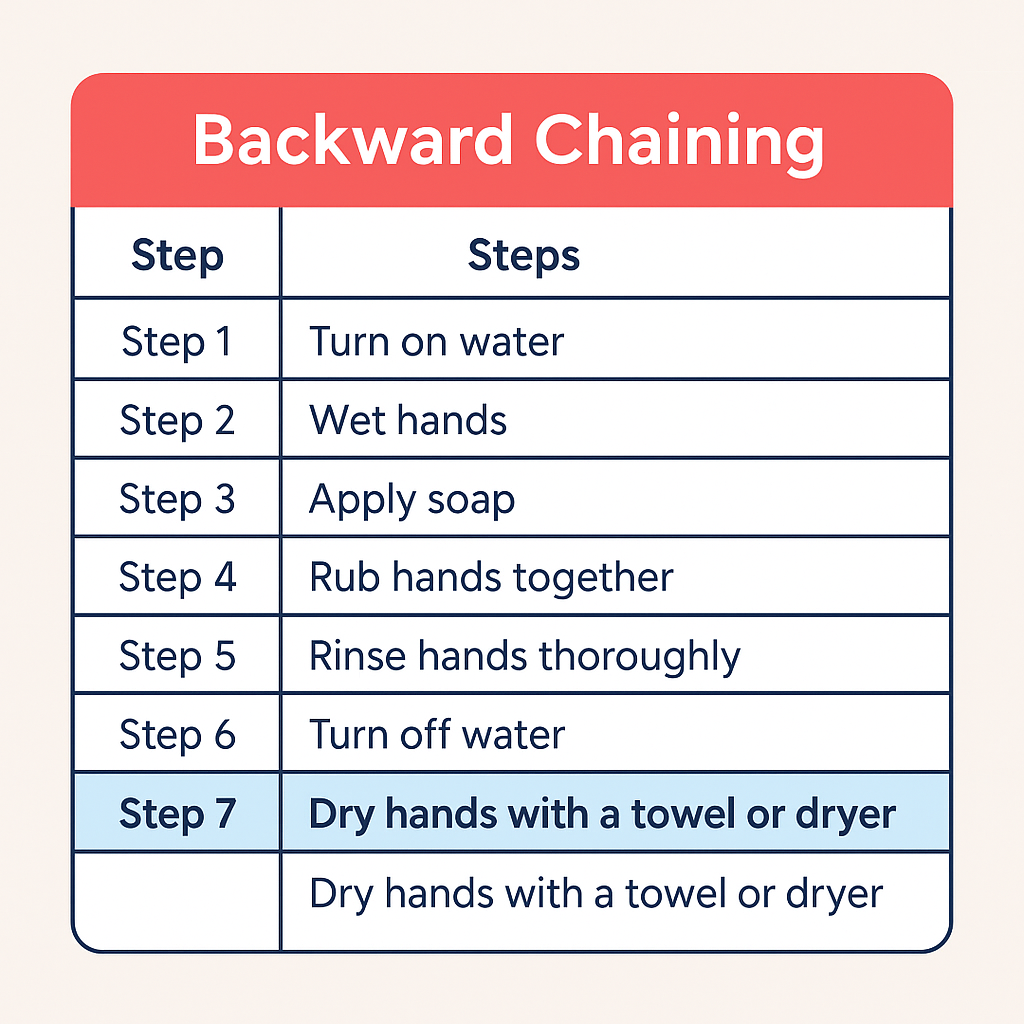
Total Task Chaining
In total task chaining, the client attempts all steps in the task during each teaching session.
The RBT® provides prompts only as needed and gradually fades them as independence improves.
Example – Tying Shoelaces:
These steps can be taught using chaining procedures like forward chaining, backward chaining, or total task chaining, depending on the learner's starting point and skill level.
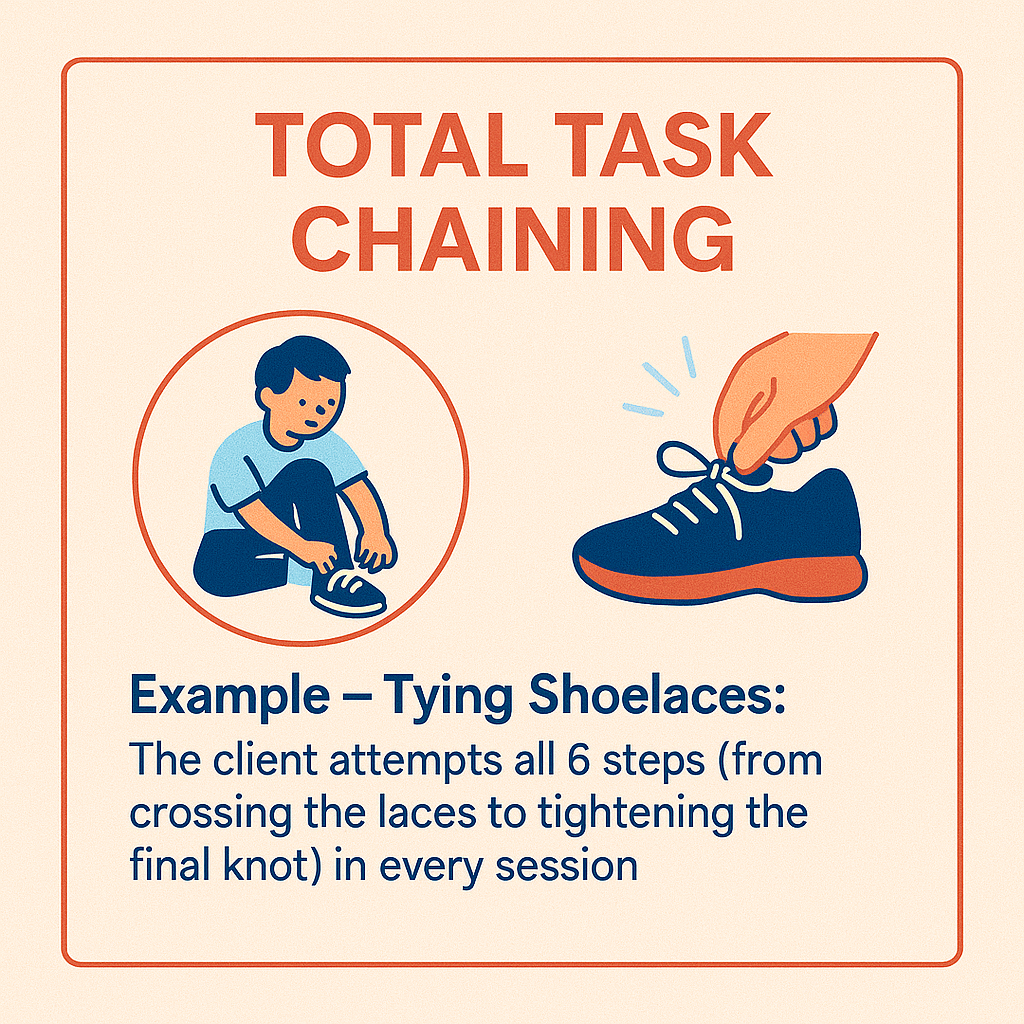
Final Takeaway 🎯
🔓 Download Your FREE Task Analysis Study Resource
Every task taught is a step toward independence. And every RBT® trained with ATCC is a step closer to making that happen.
